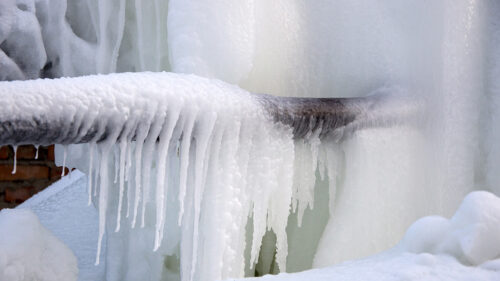It’s that time of year — you know, the one where the cold strikes and we all start dreaming of the spring and summer months. Ahhh…boating and golfing sound so great about right now. Sorry, I literally got caught dreaming there for a minute. Back to reality.
The cold is nothing new. It comes and goes every year. But, if you’re not prepared, the cold can burn a hole in your wallet.
My team specializes in helping fraternal organizations flourish and minimize claims. Because of that, I want to run down a list of things fraternities and sororities should consider this time of year.
How can you manage your claims this winter?
Freeze claims each year cost hundreds of thousands of dollars. Losses predominantly occur during holiday breaks, when college students have headed home and there’s no one overseeing the house left behind.
During the winter of 2013-2014, $2.7 million was paid for water damage resulting from frozen pipes that burst in the Fraternal Property Management Association program. And don’t assume these issues only happen in what we all consider colder cities/states. In one instance, the heat was turned off in a chapter house located in a part of the country where the weather does not typically dip below the freezing mark. Unfortunately for this chapter, the weather became unusually cold, leading to frozen pipes and water damage. There was no insurance coverage for this claim, as the owners failed to maintain heat in the building.
So, what should you do?
- Turn the heat down to no less than 60 degrees and never turn the heat off.
- Have a house corporation officer or undergraduate member stop by the house daily to make certain it’s secure and the heat is working. If this can’t be done, hire someone to do it for you over the break.
- Have the furnace or boiler serviced in the fall.
- Fix all broken windows.
- Call your heating contractor immediately if there’s a problem with the furnace and take immediate action to prevent further damage.
- Consider installing a water detection system like PipeBurst Pro. The system monitors your pressurized water lines for unintended water flow of your plumbing system and fixtures. The device may be set with flow restrictions for automatic water shut off or alert an authorized user allowing water shut off from a remote location. The system also monitors water temperature to provide freeze warnings. Discounts may be available for installation of this system.
- Be aware of your outside property. To ensure members, guests or someone simply walking by isn’t hurt, make sure snow is removed and ice is treated in a timely fashion.
To prevent a frozen pipe situation, consider these steps:
- Identify the pipes that are potentially exposed to freezing temperatures. Remember, heated areas that are drafty can have pipes freeze up due to the draft. This is the common cause of pipe freeze ups in basements.
- Drain water supply lines for systems that can be shut down.
- Heat trace or insulate supply lines that must remain operational. For systems that can’t be isolated or heat traced, allow a small flow to continuously run through the system. The flowing water should prevent freeze-up. Be careful of where the water discharges so as not to create another problem.
- Close inside shut-off valves to hose bibs. Open the outside valve to drain water. Leave outside valves open to allow condensation to drain and reduce the risk of water buildup inside the valve housing. Cover hose bibs that can’t be shut-off inside the building. Insulating covers are available at most hardware stores. An alternative is to wrap the hose bib with a towel and cover the towel with plastic.
Now, we want to hear from you. Are there precautions you’ve taken that aren’t listed above or any advice you can give? We’d love to know. Talk with us!





